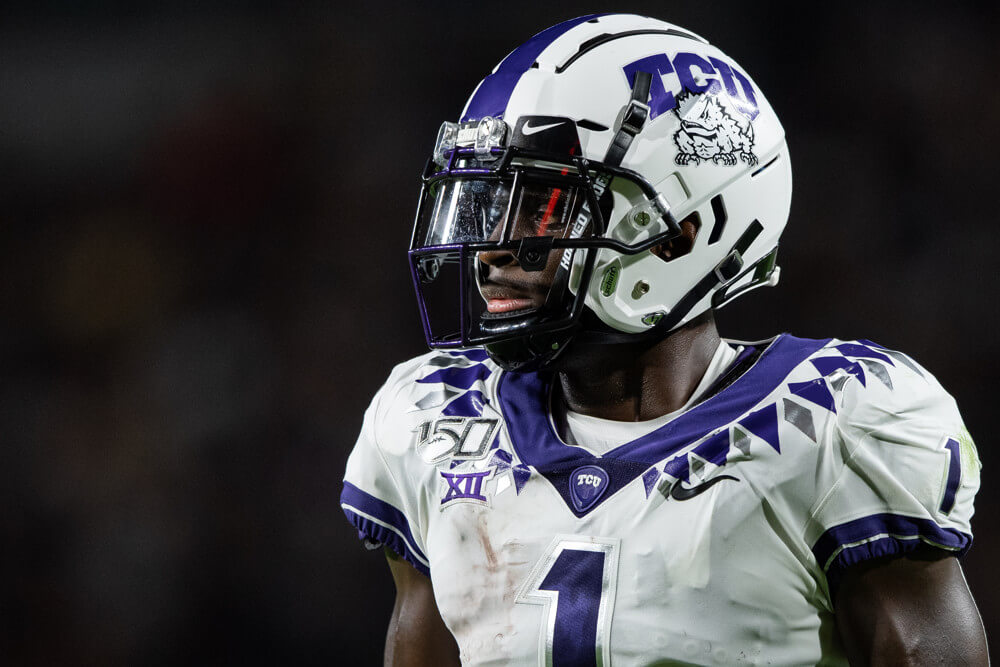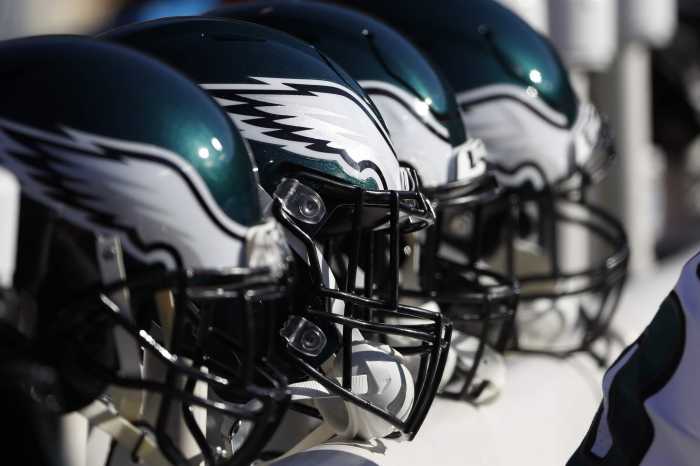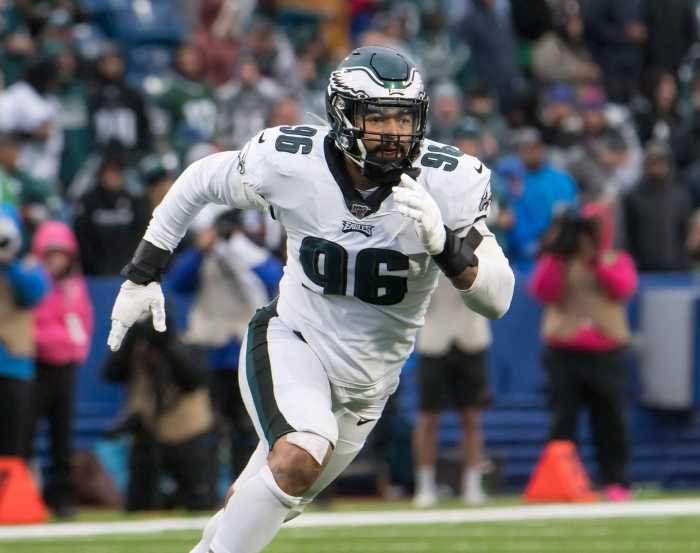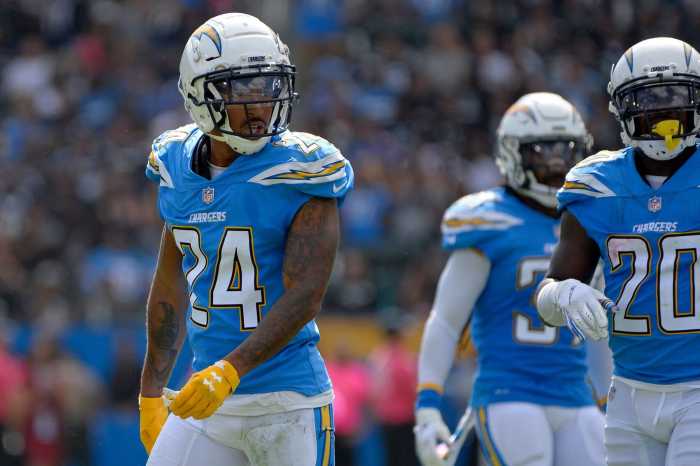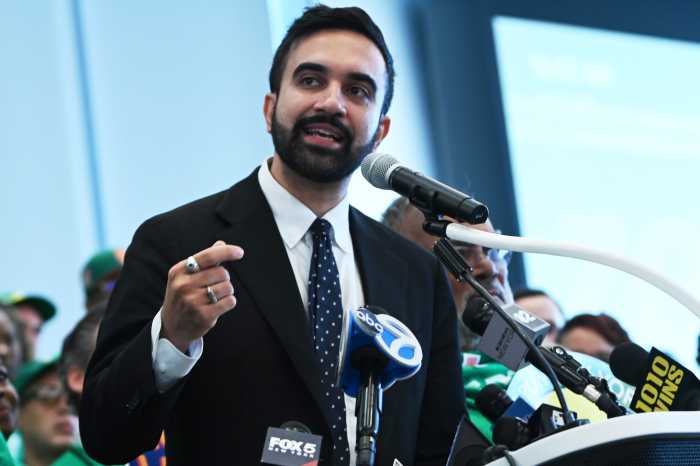For years, the Eagles spent draft capital on players who may not have been the most athletic but produced for their respective colleges.
If you’ve read my work in the past, you know I love the Relative Athletic Scores system that Kent Lee Platte developed. I took some time to record the scores of every draft pick of the Eagles since 2010, when Howie Roseman became general manager.
Folks, it isn’t pretty.
It’s been widely viewed that Howie Roseman and whomever was helping him evaluate the draft talent in each respective year would prioritize “box score” production over overall athleticism. That hasn’t fared well in terms of longevity on the team.
I know, I know, the Eagles won the Super Bowl during the 2010s so who cares what the draft plan is, right?
Wrong! Jeez.
Looking at how deep each team is getting throughout the league, it’s imperative that Howie starts getting these draft picks right and they last for 4-5 years at the minimum.
From 2010-2017, only 13 of the team’s 70 draft picks are still on the team. Of the remaining 57 players, only 13 are on an NFL team and four are free agents. So from the eight drafts, only 30 of the 70 are still in the NFL in some capacity. (Only two players prior to 2010 are still active: DeSean Jackson and LeSean McCoy)
The 2017 Super Bowl team had 37 drafted players on their 53 man roster, however, it could be argued that only 17 players made a significant impact.
From 2010-2017, the philosophy in the draft seemed as if it was almost solely based on college production.The information gathered from relative athletic scoring backs up that assumption.
What am I looking at?
A score of 8.0-10.0 on the relative athletic scoring system is deemed “elite”. A score between 5.0-7.9 is “okay” and a score 4.9 or below is “poor”.
Green scores for explosion are categorized as “good”, “great”, and “elite”. Yellow scores are categorized as “okay. Red is categorized as “poor”.
Here is the list of players drafted from 2010-2017 and how they fall in each category:
| Elite/Green | 18 |
| Elite/Yellow | 4 |
| Elite/Red | 1 |
| Okay/Green | 10 |
| Okay/Yellow | 10 |
| Okay/Red | 6 |
| Poor/Green | 1 |
| Poor/Yellow | 3 |
| Poor/Red | 12 |
From 2010-2017, the Eagles spent 18 picks on players who fell into the elite athleticism and green explosive category. However, as you can see above, their next highest was poor athleticism and red explosiveness. 23 picks in total were used on players with elite athleticism, 26 were on players with okay athleticism, and 16 were used on players with poor athleticism. Five players did not register a score due to no combine performance (Alex Henery, Stanley Havili, Brandon Boykin, JaCorey Shepard, and Mack Hollins).
Eagles Hits
Make no mistake about it, there have been some absolute hits in the drafts from 2010-2017 that haven’t been scored as the most athletic and/or the most explosive.
Brandon Graham scored elite athleticism for defensive end (was just “okay” for linebacker) and scored okay explosive grades.
Fletcher Cox and Zach Ertz scored elite athleticism yet scored poor explosive grades.
Vinny Curry also measured out okay in athleticism and poor in explosive.
Yet those four players have played an extremely important part in the Eagles success over the last decade.
On the flip side, the Eagles have drafted some highly athletic and explosive players that haven’t done much.
Eagles Misses
The late Daniel Te’o Nesheim scored elite athleticism and explosive grades but lasted six games with the team.
Other players who scored elite athleticism and “good”, “great”, or “elite” explosive grades from 2010-2017:
- Keenan Clayton
- Clay Harbor
- Jamar Chaney
- Curtis Marsh
- Earl Wolff
- Joe Kruger
- Brian Mihalik
- Alex McCalister
- Joe Walker
Results
Have the “elite” players produced?
Out of the 23 “elite” athletic players, only five are still with the team (Wentz, Cox, Graham, Johnson, Kelce). Four are on other teams (Hicks, Rowe, Walker, Allen), one is in the CFL (McCalister), five are free agents (Mihalik, Matthews, Kruger, King, Kendricks), and seven are out of the league (Wolff, Brown, Marsh, Chaney, Sapp, Harbor, Clayton). The final one that is not accounted for in that list is Te’o Nesheim who passed away in 2017.
Earlier in this article, I mentioned that there are 13 players still on the team since 2010. With those five that were mentioned in the previous paragraph, that means eight players drafted that did not fall under the “elite” athleticism category.
Those players are:
- Vinny Curry
- Zach Ertz
- Isaac Seumalo
- Jalen Mills
- Derek Barnett
- Sidney Jones
- Rasul Douglas
- Nathan Gerry
Drafting elite athletes hasn’t produced the most players for the Eagles, but it could be argued that it has produced the most impactful (aside from Ertz).
Did the Super Bowl signal a change in draft philosophy? The 2018-2020 draft seems to signify so.
Check that part out on the next page.
Photo by Zach Bolinger/Icon Sportswire

